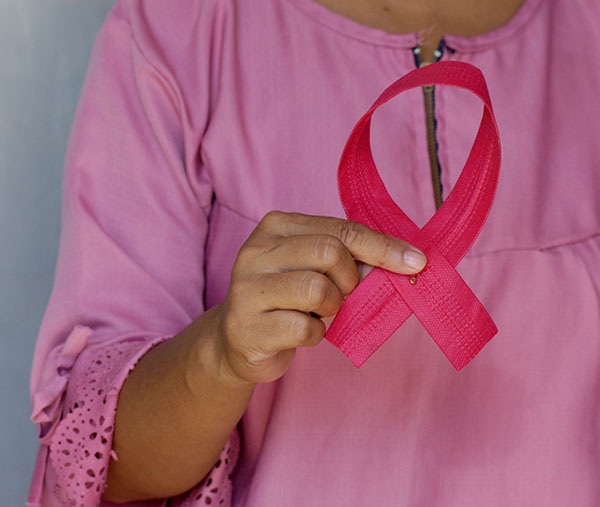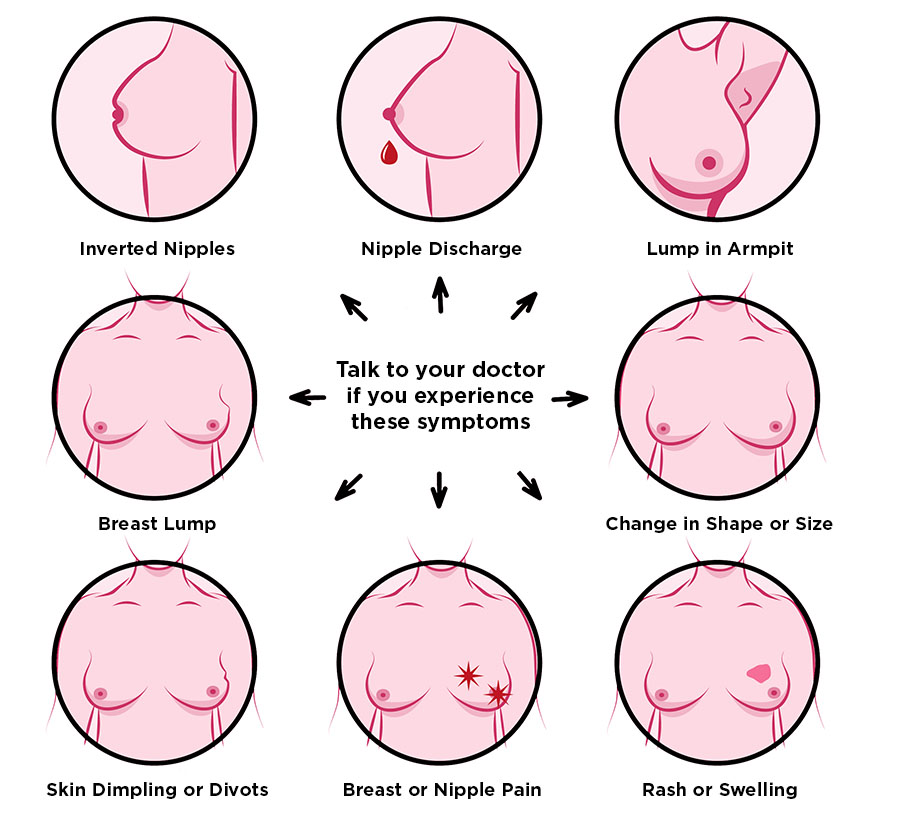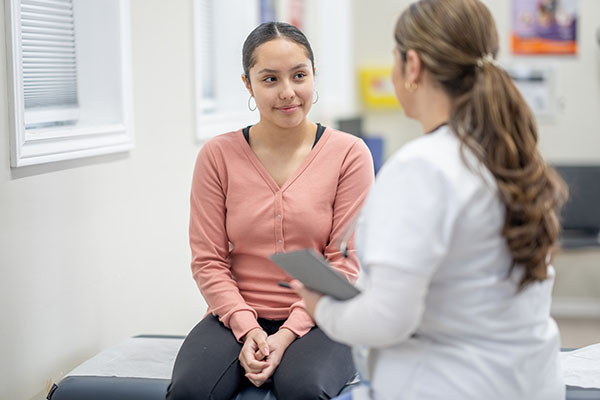How Knowing Your Body Can Help Detect Breast Cancer Sooner
By Kristy Warren
Breast cancer is the most common cancer in women, affecting millions of people across the world. Nearly one in eight women will develop breast cancer, and finding it early provides the best chance of treating it successfully. In addition to preventive screening tools like mammograms and annual physicals, learning how to support your breast health and what is normal for your body are important lines of defense in reducing your cancer risk and catching potential trouble early when it is the most treatable.
Learning Your Personal Breast Cancer Risks
There are many factors that go into determining your overall risk of developing breast cancer, including:
- Age
- Race
- Pregnancy
- Breastfeeding
- Activity levels
- Alcohol consumption
- Genetics
One of the most important ways to determine your personal risk is to discuss your family history with your doctor. If possible, determine who has had breast cancer within the last two to three generations of your family tree and their age at the time of diagnosis.
Remember, while breast cancer is more common in women, men can also develop breast cancer. Approximately one in every 1,200 men has breast cancer. Everyone should familiarize themselves with their breast tissue to monitor for changes and talk to their healthcare provider promptly about any concerns.
What You Should Watch For
No two people or their breasts are the same, so learning what’s normal for your body plays an important role in flagging potential trouble. The best way to know what’s normal and what’s not is to learn your breasts’ unique characteristics. How your breasts look and feel can change with age and over the course of your menstrual cycle. For example, your breasts may feel different leading up to, during, and after your period, such as increased lumpiness, tenderness, or other changes in texture and density.
While some cancer prevention organizations no longer recommend standardized monthly self-exams, everyone agrees it is important to get to know your breasts and to keep an eye out for specific types of changes.

In a mirror, look at the shape and appearance of each breast while standing with your hands at your sides and then with your hands raised above your head. Check for any dimpling, rashes, divots, or pitting in your breasts.
When dressing and bathing, pay attention to any nipple discharge or changes in how your breast feels (e.g., a new lump or mass that remains fixed throughout your entire menstrual cycle).
If you notice anything unusual or are feeling uncertain about a change in your breast, call your healthcare provider and get checked.
When to See a Doctor
It’s normal for your breasts to change slightly over time, but if you experience any of the following changes, make an appointment with your family doctor for further examination:
- Discharge from your nipples
- Changes to your nipples’ appearance or position (e.g., changes in color or inverted nipples)
- New lumps, thickening breast tissue, or fixed masses (e.g., a hard or knobby mass that feels fixed to the tissues around it)
- Changes in the overall shape, texture, or size of your breasts
- Masses with irregular borders or that seem to be growing in size
- Changes in the appearance of your breasts’ skin, such as puckering, rashes, or divots
- Discovering any portion of your breast that feels notably different than it did previously
If you feel a change in your breast, don’t panic. Changes can be the result of other conditions like benign cysts or non-cancerous tumors like lipomas and fibroadenomas, but it is best to have any concerning changes checked out by a medical professional to get an accurate diagnosis instead of making an assumption that a change is or is not dangerous. To determine the cause and type of lump, your doctor may order an imaging test like an ultrasound or mammogram and may request a biopsy to review the breast tissue itself.

When to Start Mammograms
Mammograms are one of the best screening tools for detecting breast cancer. They compress and x-ray the breasts to detect any potential cancerous tissue. They can also identify benign masses like cysts and fibroadenomas. Your personal level of risk and family history determines when you should receive your first mammogram.
Most women with average risk should have their first mammogram between the ages of 40 and 45. Your healthcare provider will advise if you should receive mammograms annually or once every two years based on your health and history. Those who have a significant family history of breast cancer, genetic mutations associated with breast cancer, first-degree relatives with breast cancer, or a previous breast health issue may be advised to be screened earlier and more often.
3D mammography may be recommended if you have dense breast tissue. For women under 40 with breast health concerns, other tools like breast ultrasounds may be used to image the area instead of mammography.
By keeping up to date with your breast health screenings, learning what’s normal for you and your breasts, understanding your personal risk for developing breast cancer, and living a healthy lifestyle, you are giving yourself your best chance at better breast health. If you notice a change in your breasts—be it size, shape, color, or texture, don't wait. Talk to your healthcare provider about your concerns.

If you are due for a breast exam, have a concern about a change in your breast, or would like to discuss your personal breast cancer risks, make an appointment with your local Laurel Health Center today.
Promoting Good Breast Health
Your best defense against breast cancer is a healthy lifestyle, knowing your family history, and maintaining regular preventive screenings, including routine mammograms based on your age / risk factors and an annual breast exam by your healthcare provider during your physical.
You can support good breast health and overall well-being by:
- Eating well: eat a diet high in fiber, vegetables, whole grains, and fruit; lower your fat and sugar intake; and get enough lean protein.
- Exercising regularly: aim for at least 20 minutes of exercise daily. The American Heart Association and CDC recommend 150 min of moderate exercise/week or 75 min vigorous exercise/week for adults.
- Quitting tobacco, including cigarettes, smokeless tobacco, and vaping.
- Moderating your alcohol intake (no more than 3-5 drinks per week).
- Managing stress. Long-term stress is bad for your body but we can't always easily eliminate the sources of stress from our daily lives. Find a form of stress relief that works well for you, be it exercise, relaxation, socializing, laughter, or making more time for fun activities.
- Maintaining a healthy weight. Balancing a healthy diet with good nutrition and physical activity can help you more easily maintain a healthy weight range. Being clinically underweight or overweight may increase your risk of certain health conditions.
Remember, you are an important advocate for your own health! If something feels off, make an appointment to talk with your doctor about your concerns.
Have questions about your breast health? Talk with a medical expert. The Laurel Health Centers have same-day appointments available in Tioga and Bradford Counties. We are also committed to serving all patients regardless of their ability to pay, offering a sliding fee scale to ensure all patients receive the care they need.
For more information about our breast health services or to make an appointment, call 1-833-LAURELHC (1-833-528-7354) and select the clinic location of your choice or visit our contact page for a full list of Laurel Health locations and office numbers.
